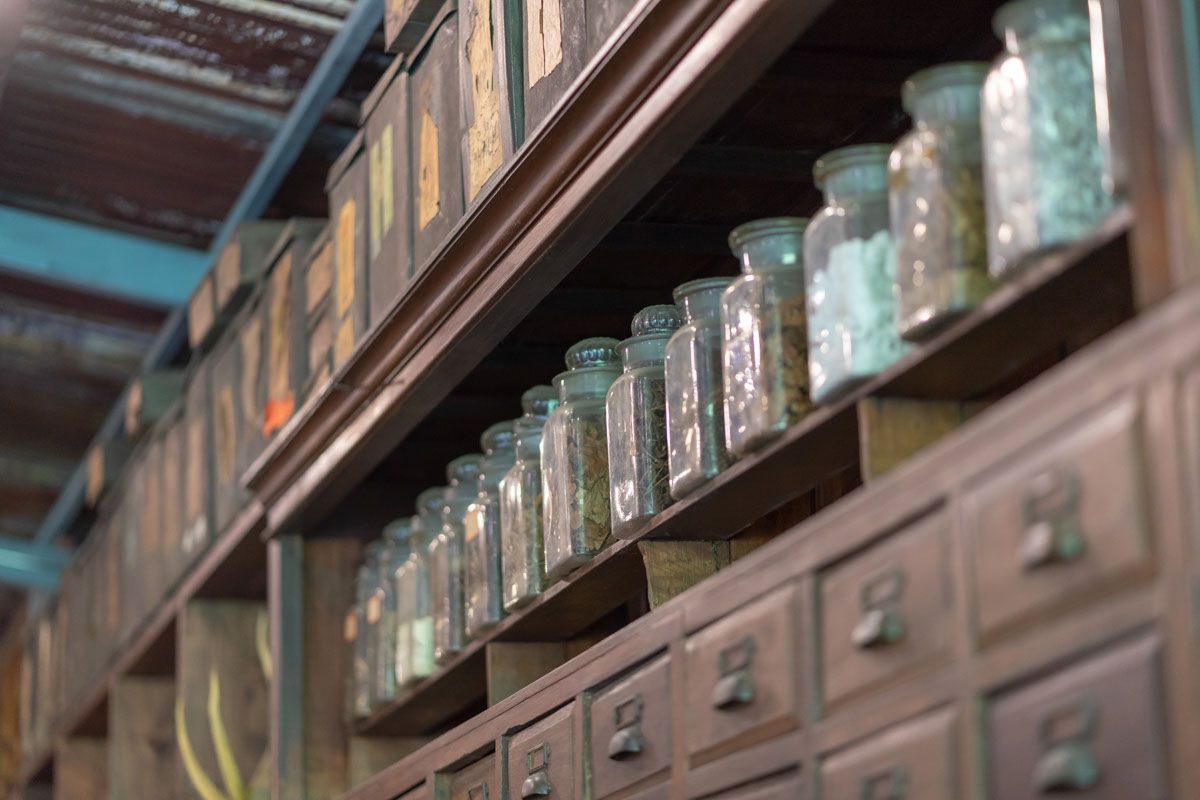Pharmacology(中醫藥理學) and Toxicology(毒理學) of Traditional Chinese Medicine
Professor Feng Yibin
Dean and Professor, School of Chinese Medicine, University of Hong Kong
Host : Ms. Wong Wing Chen, Janet
Information Compilation : Ms. Bernadette Cook, Ms Rita Liaw
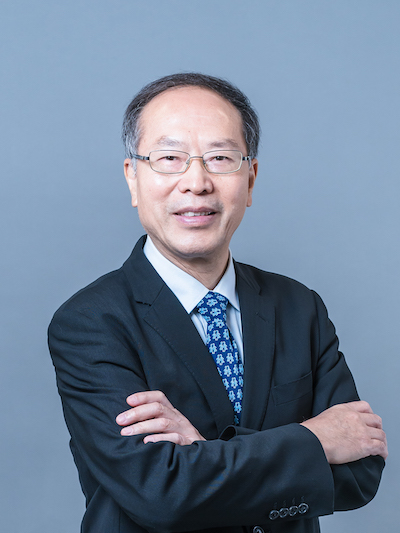
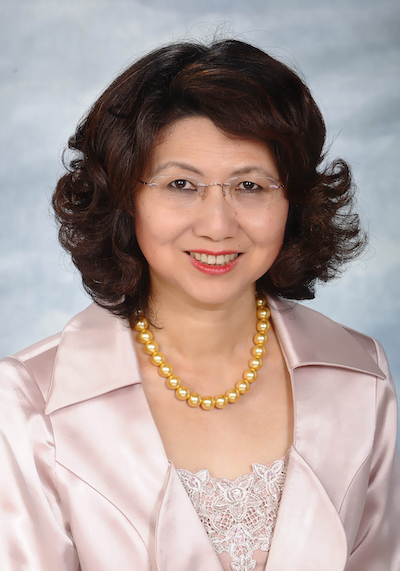
Introduction: We often hear some cancer patients say that when they return home and open the packets of Traditional Chinese medicine (or "decoction pieces"(飲片)) they got from the Chinese medicine clinic, they can't help but feel puzzled when they see all those unknown substances: What are these? Will there be any negative effects if I take them? Or even if there is anything toxic in them? In this interview, Professor Feng Yibin will discuss with us the pharmacology and toxicology of traditional Chinese medicine.
Part One - Pharmacology
Part Two - Toxicology
Part Three - Use of Health Products
Part One - Pharmacology (藥理學)
Wong: Many cancer patients want to receive traditional Chinese medicine treatment while receiving Western medicine treatment.
But when they return home and open the packets of traditional Chinese medicine (or "decoction pieces") (飲片)they got from the Chinese medicine clinic, they can't help but feel puzzled - what are these? Will there be any negative effects if I take them? Or even if there is any toxicity in them?
Today I am very pleased to invite Professor Feng Yibin to explain this to us.
Thank you, Professor.
Feng: You're welcome.
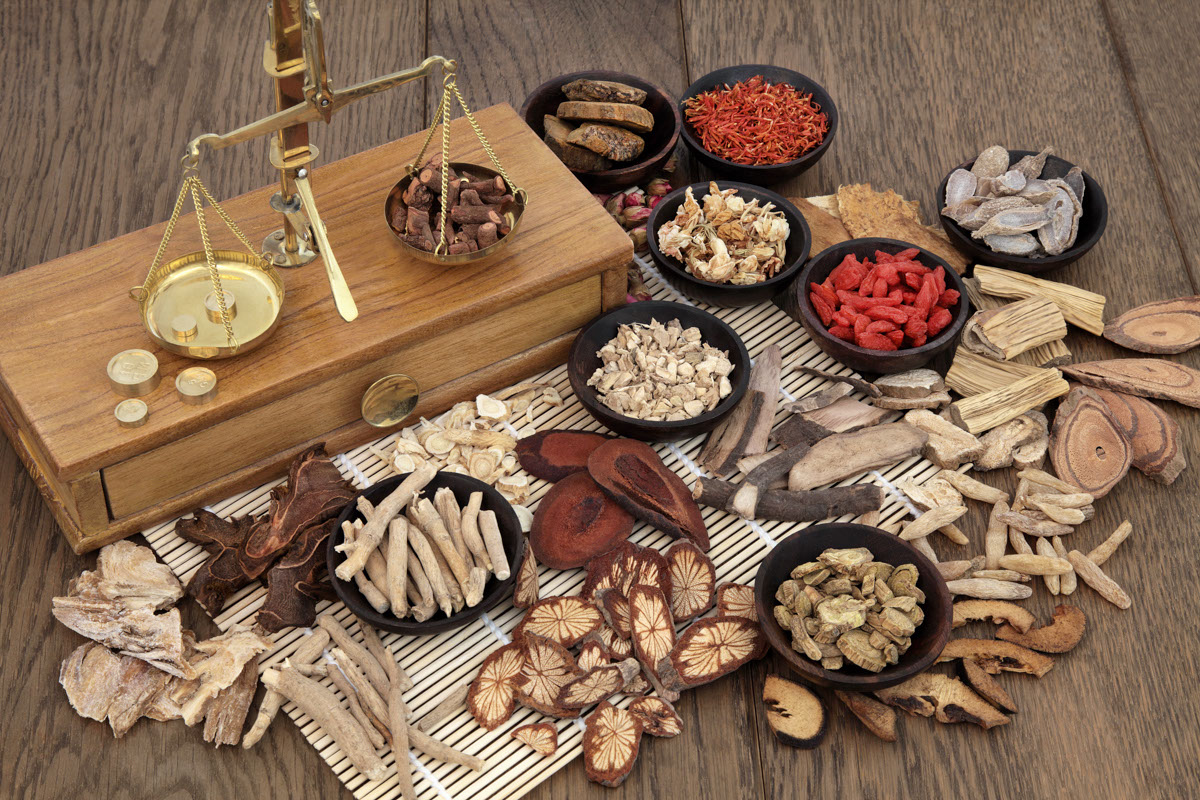
Wong: I know that your research scope includes the pharmacology and toxicology of traditional Chinese medicine, so I would like to talk about this.
What drugs are commonly used in the treatment of cancer? Are they mostly plants, animals or minerals?
Of course, I understand that cancer is a very complex disease, different patients, different situations require different drugs, but I just want to have a general understanding.
Types of Traditional Chinese Medicine
Feng: At present, there are 12,807 kinds of single traditional Chinese medicines, and more than 100,000 compound formulas. I co-edited and published a book "Modern Research and Clinical Application of Antitumor Traditional Chinese Medicine" (《抗腫瘤中藥現代研究和臨床應用》)with Shanghai University of Traditional Chinese Medicine two years ago, which includes more than 300 commonly used traditional Chinese medicines, including natural plants, animals and minerals. The most common ones are plant-based traditional Chinese medicines. With these traditional Chinese medicines alone, countless compound formulas can be formed to deal with different kinds of cancer.
As you say, cancer is very complex. Traditional Chinese Medicine (TCM) believes that cancer is a systemic disease of both deficiency and excess, with a deficiency in the root and excess in the symptoms. "Deficiency in the root" (本虛) refers to a lack of vital energy, including deficiencies in Qi, blood, Yin, and Yang; "Excess in the symptoms" (標實)refers to an excess of pathogenic factors, including stagnation, cold congealment, heat toxins, phlegm dampness, water toxins, Qi stagnation, blood stasis, wind dryness, and other pathogenic toxins (鬱結、寒凝、熱毒、痰濕、水毒、氣滯、瘀血、風燥 ). TCM combines "disease differentiation"(辨病) with "syndrome differentiation" (辨證), and "whole body" with "local", to support the body's vital energy and eliminate various pathogenic toxins to fight cancer, balance the organs' Qi, blood, Yin, and Yang, and cooperate with various Western cancer treatments to achieve the goal of eradicating, eliminating, or suppressing cancer cells.
In the past century, tumor research has achieved many milestone results. The earliest research hypothesis, which is also the first milestone, is the Seed and Soil hypothesis proposed in 1889. It can be said that all research over the past century has been based on this aspect and has been continuously deepened. From the perspective of TCM and Western medicine, Western medical treatment mainly aims to eliminate, suppress the germination, growth, or spread of the cancerous tumor—the "seed"; while TCM mainly aims to improve the "soil", making it unfavorable for the germination, growth, or spread of the cancerous tumor. The combination of TCM and Western medicine in treatment and research is to complement each other and play to their strengths.

Chemical components of Chinese medicine
Wong: In fact, both Western medicine and Chinese medicine are chemical components. After entering our body, they will trigger a series of changes, thereby having a therapeutic effect.
Western medicine is very precise, mostly a single chemical element, such as the common painkiller paracetamol. But in Chinese medicine, what we take is a combination of different natural medicines (which can be plants, animals, or minerals) - the so-called "compound prescription"(複方). A prescription can have more than ten different Chinese medicines.
Even a single Chinese medicine, such as Angelica, contains many different chemical components. So when we eat, in addition to eating the element we want (or the active ingredient as it is called in English), we also intake other substances at the same time.
So when we take Chinese medicine, do we intake a lot of substances we don't want? Is there any harm in this?
Feng: You've raised a very important question. Both Chinese and Western medicine are chemical components. The difference is that most Western medicines are single chemical components, while most Chinese medicines are multiple chemical components. A single Chinese medicine may contain dozens of chemical components, and a compound Chinese medicine may contain dozens or even hundreds of chemical components.
Going back 100 years, both the East and West used natural plants, animals, and minerals as therapeutic substances. Later, due to the advancement of chemistry and pharmacology, the West gradually separated single chemical components from natural medicines. Today, in addition to artificially synthesized chemical components, about a quarter of Western medicines are still extracted from natural resources.
Western medicine focuses on a single component, with clear understanding of its metabolism, pharmacological effects, drug safety aspect and clear guidelines on its clinical application.
Chinese medicine, on the other hand, is composed of multiple components. Although a lot of modern research has been done, there are still unclear aspects of certain metabolism, pharmacological effects, etc in the body. Especially when two or more Chinese medicines are combined into a compound, it becomes more complex. However, we don't need to worry too much about consuming substances we don't need thus causing harm when taking Chinese medicine.
Firstly, "medicine and food have the same origin"(藥食同源). Chinese medicine, like our diet, is knowledge accumulated through the continuous practice of countless ancient sages and people. We know what we can eat and what we cannot eat. Secondly, the first pharmacology monograph in China, "Shennong's Herbal Classic" ( 《神農本草經》), classified the duality of drugs (efficacy and safety)(雙重性—-功效和安全性 ) into three categories more than two thousand years ago:
- "Top grade"(上品): "There are 120 kinds of top-grade medicines, which are the monarch(君). They nourish life in response to heaven and are non-toxic." (上藥一百二十種為君,主養命以應天,無毒 )They can be taken for a long time without harming people, and can maintain health, prolong life, such as ginseng, licorice, rehmannia, coptis, jujube, etc.(如人蔘、甘草、地黃、黃連、大棗等 )
- "Middle grade"(中品): "There are 120 kinds of middle-grade medicines, which are the ministers(臣). They nourish and can be non-toxic or toxic, and should be used judiciously." (中藥一百二十種為臣,主養性以應人,無毒有毒,斟酌其宜。 )They can maintain health and cure diseases, but should be used according to the characteristics of the medicine, such as lily, angelica, longan, deer antler, ephedra, angelica dahurica, scutellaria, etc.(如百合、當歸、龍眼、鹿茸、麻黃、白芷、黃芩等 )
- "Lower grade"(下品): "There are 125 kinds of lower-grade medicines, which are the assistants(佐使 ). They cure diseases in response to the earth. They are mostly toxic and cannot be taken for a long time." (下藥一百二十五種為佐使,主治病以應地,多毒,不可久服)。Such as rhubarb, aconite, gan sui, croton, etc.(如大黃、烏頭、甘遂、巴豆等), are toxic or highly toxic. Intake must be stopped when the disease is cured, and cannot be overdosed or taken for a long time.
In a way, traditional Chinese medicine has a much wider range than Western medicine, including modern meanings of food, health products, drugs, narcotics, etc. However, in use, the duality of the drug must be considered.
Finally, traditional Chinese medicine has been organized into a systematic and standardized knowledge system. Through the theory of compatibility and the use of the monarch, minister, assistant, and guide(配伍理論和君臣佐使), the therapeutic effect of traditional Chinese medicine is ascertained and adverse reactions are avoided. It is also the duty of experts to ensure the treatment and safety of patients. Of course, the theory and knowledge of traditional Chinese medicine are also advancing with time. Past theories and knowledge need to be verified and developed in clinical practice and further research is necessary. For example, the principle of three-product classification(三品分類) is good, but today, some specific drug classifications need to be adjusted according to modern research.
What is the Monarch, Minister, Assistant, and Guide(君臣佐使)?
Wong: You mentioned the concept of "Monarch, Minister, Assistant, and Guide", does it mean that different drugs will cause different chemical reactions, but overall they can bring about a desirable consequence?
Feng: Basically, it can be understood this way. Most of the Chinese medicine is used in combining two or more elements. First, the "Seven Emotions and Harmony" (7 kinds of drug use situations, 6 of which are compatibility methods and taboos)(七情和合) and the prescription method "Monarch, Minister, Assistant, and Guide" were proposed in the "Shennong's Materia Medica"(《神農本草經》). The "Monarch, Minister, Assistant, and Guide" is the principle of Chinese medicine prescription. The so-called Monarch, Minister, Assistant, and Guide were originally different hierarchical members in society, with different functions and levels. Pharmacology borrows it to explain the different roles of drugs in compatibility, indicating the role of drugs in prescriptions, and their respective roles.
Monarch - The "Monarch Medicine" (君藥)is a drug that treats the main disease or main symptom. In a prescription, the monarch medicine is an indispensable drug, and the dose should be larger than other drugs.
Minister - The "Minister Medicine" (臣藥)assists the monarch medicine to enhance the treatment of the main disease or main symptom, or the drug that treats the concomitant disease or concomitant symptom. (Note: "Concomitant disease" or "concomitant symptom"(「兼病」或「兼症」) is somewhat similar to the English term of "complications".)
Assistant - The "Assistant Medicine" (佐藥)has three meanings:
- Assisting medicine(佐助藥), that is, assisting the monarch and minister medicine to enhance the therapeutic effect, or directly treating minor concomitant symptoms;
- Adjuvant medicine(佐製藥), that is, used to eliminate or alleviate the toxicity or intensity of the monarch and minister medicine; and
- Antagonist medicine(反佐藥), that is, according to the needs of the disease, the medicine that can play a complementary role in treatment with the opposite nature and taste of the monarch medicine.
Guide - The "Guide medicine"(使藥) has two meanings:
- One is the guide medicine(引經藥), that is, the medicine that can guide the medicines in the prescription to reach the lesion(病灶);
- The second is the harmonizing medicine(調和藥), that is, the medicine that has the function of harmonizing all medicines. When a person suffers from multiple diseases, Western medicine uses different medicines to treat the different diseases, whereas Chinese medicine uses different medicines to form a prescription(方) to treat different diseases or different syndromes.
Wong: So "Monarch, Minister, Assistant, and Guide" are four different elements. I used to think that "Monarch and Minister" are two subjects and "Assistant and Guide" are verbs, but I was wrong.
However, this theory is a bit complicated, can you explain it with an example? For example, I often hear that in the prescription for treating cancer, "Hedyotis diffusa"(百花蛇舌草) is used. Is this a "monarch medicine"? And what would be the other "minister", "assistant", "guide" medicines? What is the principle of matching?
Feng: Traditional Chinese medicine emphasizes the concept of the totality and syndrome differentiation in treating diseases. The prescription of medicine is based on the doctor's grasp of the whole situation and the syndrome differentiation of the disease, combined with the patient's constitution, climatic characteristics, and geographical environment. Comprehensive assessment is carried out, or individualized treatment, so each patient's prescription may be different, but for the same patient, the doctor's principles, methods, prescriptions, and medicines must be consistent. The ratio can be adjusted according to the principle of one monarch, two ministers, three assistants, five guides or one monarch, three ministers, nine assistants and guides, or it can be more flexible (其比例可按照一君、二臣、三佐、五使或一君、三臣、九佐使的原則來處理).
An example
For example, here is a case, a 60-year-old male patient with advanced lung cancer, with liver metastasis, has completed chemotherapy, and currently has the following clinical manifestations:
・Fatigue;
・Dry cough with little sputum;
・Poor appetite and less food;
・Discomfort in the right rib;
・Poor sleep and constipation;
・Dry and itchy skin;
・Soreness and weakness of the waist and knees;
・Red tongue with thin yellow fur; and
・Pulse string and thin, etc.
The Chinese medicine diagnosis is "deficiency of lung, spleen and kidney, and accumulation of heat and toxin"(肺脾腎虛,熱毒結聚).
So the treatment direction will be to nourish the lung, spleen and kidney, and clear heat and detoxify(補益肺脾腎,清熱解毒).
The prescription is:
- Ginseng and Hedyotis diffusa as the monarch medicine;
- Adenophora, Ophiopogon japonicus, Cranesbill, Seven-leaf one-flower, Scrophularia, Rehmannia, Angelica, and Paeonia lactiflora as the minister medicine;
- Rose, Spatholobus suberectus, and raw malt as the assistant medicine; and
- Platycodon grandiflorum and licorice as the guide medicine.
Because cancer is deficiency in origin and excess in superficiality, there are two monarch medicines here, and a large prescription is needed to cope with the complex condition.
Wong: Can you explain more about the medication?
Feng: Sure, here is a detailed analysis:
| Medicine Name | Medicine Characteristics | Symptoms to Improve | |
| Monarch Drug | Ginseng and Hedyotis Diffusa | Tonify the spleen and lungs, greatly replenish vital energy; clear heat and detoxify, reduce swelling and detoxify | Fatigue, weak waist and knees, poor appetite due to Qi deficiency; lung abscess heat toxin; sore throat |
| Minister Drug | Adenophora, Ophiopogon, Sedum, Seven Leaves One Branch Flower, Scrophularia, Rehmannia, Angelica, Paeonia Lactiflora | Clear the lungs and nourish yin, benefit the stomach and produce saliva, moisten the lungs and nourish yin, clear the heart and remove annoyance, astringe and stop bleeding, stop diarrhea, clear heat and detoxify, reduce swelling and relieve pain, nourish blood and yin, nourish yin and blood, benefit essence and fill marrow, nourish blood and activate blood, nourish blood, astringe yin | Dry cough, dry tongue and thirst; poor appetite; fatigue, diarrhea; sore throat; annoyance and thirst; weak waist and knees, thirst; Qi and blood deficiency; fatigue |
| Assisant Drug | Rose, Chicken Blood Vine, Malt | Regulate Qi and relieve depression, activate blood and remove stasis, activate blood and regulate menstruation, nourish blood and regulate menstruation, moisten intestines and relieve constipation | Poor sleep, chest pain, blood stasis pain, constipation |
| Guide Drug | Platycodon, Licorice | Open and declare lung Qi, transform pus and remove stasis, tonify spleen and stomach, benefit Qi and restore pulse | Cough and spit pus and blood, shortness of breath, chest pain, poor appetite |
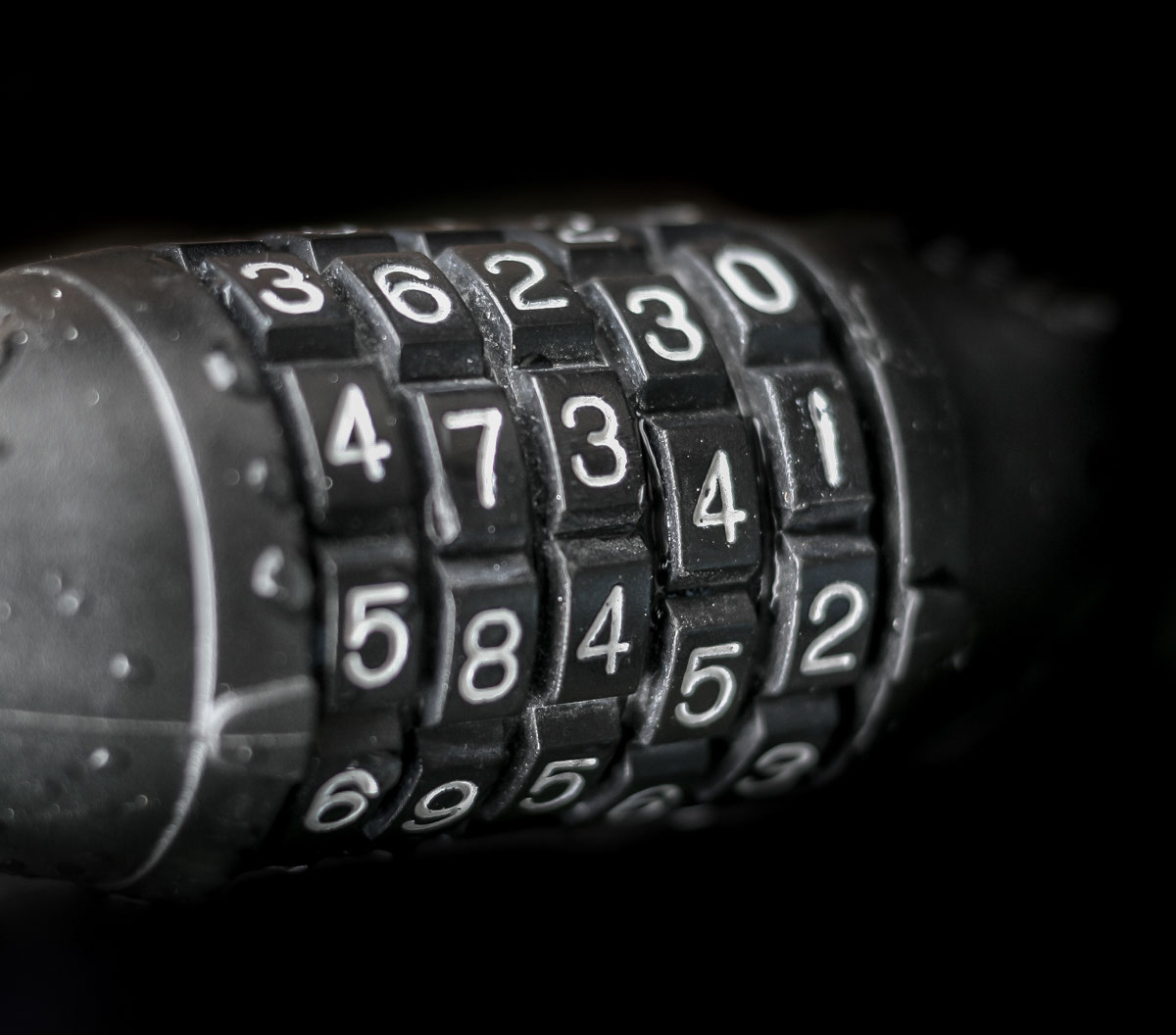
Part Two - Toxicology
Wong: Among the commonly used Chinese medicines for treating cancer, which ones are toxic? Can they still be used if they have a small amount of toxicity? How do Chinese medicine practitioners ensure the safety of patients when using them?
Feng: Chinese medicines are usually divided into twenty-one categories, all of which can be used for the treatment of cancer. However, the commonly used Chinese medicines for treating cancer are generally divided into eight categories:
- Heat-clearing and detoxifying Chinese medicines(清熱解毒類中藥);
- Blood-activating and stasis-removing Chinese medicines(活血化瘀類中藥);
- Phlegm-transforming, softening, and dispersing Chinese medicines(化痰軟堅散結類中藥);
- Water-enhancing and dampness-percolating Chinese medicines(利水滲濕類中藥);
- Wind-dampness dispelling Chinese medicines(祛風濕類中藥);
- Liver-soothing and Qi-regulating Chinese medicines(疏肝理氣類中藥);
- Tonifying Chinese medicines(補益類中藥);
- Toxic Chinese medicines, etc(毒性中藥等).
So one category of anti-cancer Chinese medicines is toxic Chinese medicines.
The toxicity of Chinese medicines is divided into three levels: highly toxic, toxic, and slightly toxic. All three levels of toxic Chinese medicines can be used. Understanding the strength of toxicity of each type of medicine can sometimes adopt the principle of "fighting poison with poison"(以毒攻毒) in treatment, such as using appropriate poisonous medicines to treat abscesses, kill parasites , etc. For example, arsenic(砒霜) is a highly toxic Chinese medicine, but it has now become a star in cancer treatment.
It is safe to let a qualified Chinese medicine practitioner use it.
Wong: For those who are not familiar with Chinese medicine, it is difficult to understand the above concepts. If we try to express it in English, or understand it with the concept of Western medicine, it may be easier to understand. Can you please explain in this regard?
Feng: Sure.
| Types of Chinese Medicine | Translation of related concepts in English | Explanation |
| (1) Clearing heat and detoxifying | Elimination of heat and reduction of side effects | The meaning of "heat" in Chinese medicine is heat is evil, equivalent to inflammation, characterized by fever, irritability, sweating, thirst, and even delirium. |
| (2) Activating blood and resolving stasis | Enhancement of circulation and reduction of stagnation Activation of blood and resolving of stasis |
The meaning of "blood stasis" is similar in Chinese and Western medicine, indicating that the blood is blocked or the internal bleeding does not go away. In Chinese medicine, "blood" means blood; "stasis" means the pathological product of blood accumulated in the organs and meridians. |
| (3) Eliminating phlegm and softening hard lumps | Elimination of phlegm and softening of tumours | "Phlegm" means the pathological product accumulated in the organs and tissues due to water metabolism disorder. "Lump" means the lumps and nodules caused by heat, phlegm, stasis, and qi stagnation; |
| (4) Promoting water metabolism and dampness | Elimination of water and dampness Inducing of diuresis to drain dampness |
"Water" refers to the water retained in the body due to water metabolism disorder; if a person accumulates too much water in the body, there is edema. "Dampness" refers to the liquid formed by the accumulation of water in the body, which is a pathological state of water and dampness that cannot be seen with the naked eye; |
| (5) Expelling wind and dampness | Elimination of wind and dampness elements | "Wind and dampness" refers to wind evil and damp evil; "expelling" means to disperse the surface evil. |
| (6) Soothing the liver and regulating qi | Soothing the liver and regulating the qi | In Chinese medicine, the liver can regulate the qi mechanism and also deal with a person's emotions. If there is a problem with the liver, the emotions will be unstable, and the liver will be depressed and there will be qi stagnation. |
| (7) Tonifying | Enhancement of immunity and strength | It refers to the deficiency of tonifying substances including various nutrients: such as blood, qi, essence, yin and yang. |
| (8) Toxicity | Toxicity and extremity | "Toxicity" in Chinese medicine refers to the toxicity and bias of Chinese medicine, including the "poison" in English, which have strong medical effects. |
How to understand the treatment of cancer with arsenic trioxide(砒霜)
Wong: Speaking of arsenic, I heard that Western medicine uses arsenic to treat leukemia. How do you understand this from a traditional Chinese medicine perspective?
Feng: To be precise, the leukemia that arsenic treats is a type of leukemia called acute promyelocytic leukemia (APL), and it has been listed as the first-line drug for treating APL worldwide. It is mainly administered by injection, and the University of Hong Kong has developed an oral administration route.
Arsenic is a highly toxic Chinese medicine, about 60 to 200mg can be fatal. Its arsenic trioxide As203 purity is close to 99%. Arsenic contains impurities, white arsenic has fewer impurities, and red arsenic has more impurities. The ancient poison "Crane Top Red" (鶴頂紅)contains impurity sulfur, which is slightly less toxic than arsenic. People are more familiar with the example of arsenic as a poison, such as in the book of "Water Margin"(《水滸傳》), Ximen Qing(西門慶) and Pan Jinlian(潘金蓮) poisoned Wu Dalang (武大郎)with arsenic; Empress Dowager Cixi(慈禧太后) used it to poison Emperor Guangxu(光緒皇帝), and Napoleon also died of arsenic poisoning.
Because of its toxicity, it must be very careful when used as a medicine, traditionally mainly for external use. Traditional Chinese medicine believes that external use of arsenic can corrode sores and remove rot, attack toxins, kill parasites, and stop itching; internal use can remove phlegm and asthma, vomit, kill parasites, and prevent malaria.
The story of turning a deadly poison like arsenic into a good medicine is a rediscovery and invention of ancient Chinese medicine. Doctors and scientists like Zhang Tingdong(張亭棟)and Chen Zhu(陳竺) conducted long and arduous scientific research on this. The 2020 Future Science Prize in Life Science was awarded to Zhang Tingdong and Wang Zhenyi(王振義) to commend their discovery of the therapeutic effects of arsenic trioxide (commonly known as arsenic) and all-trans retinoic acid on acute promyelocytic leukemia. Their work has been validated and promoted internationally, making arsenic trioxide and all-trans retinoic acid the standard drugs for the treatment of acute promyelocytic leukemia worldwide, saving many patients' lives. On a side note, Hong Kong's scientific achievements are something to be proud of. This year's Future Science Prize in Life Science was awarded to Professors Yuan Guoyong(袁國勇) and Pei Weishi (裴偉士)of the University of Hong Kong in recognition of their discovery of the coronavirus as the cause of the global severe acute respiratory syndrome (SARS) in 2003, and the transmission chain from animals to humans, which has had a significant impact and contribution to human response to MERS and COVID-19 coronavirus-induced infectious diseases. Professor Dennis Lo (盧煜明)of the Chinese University was awarded the 2021 Breakthrough of the Year Award in Life Science, in recognition of his discovery of fetal DNA in pregnant women's plasma, which pioneered the "non-invasive prenatal diagnosis" method, which can early determine whether the fetus has Down syndrome and various genetic diseases.
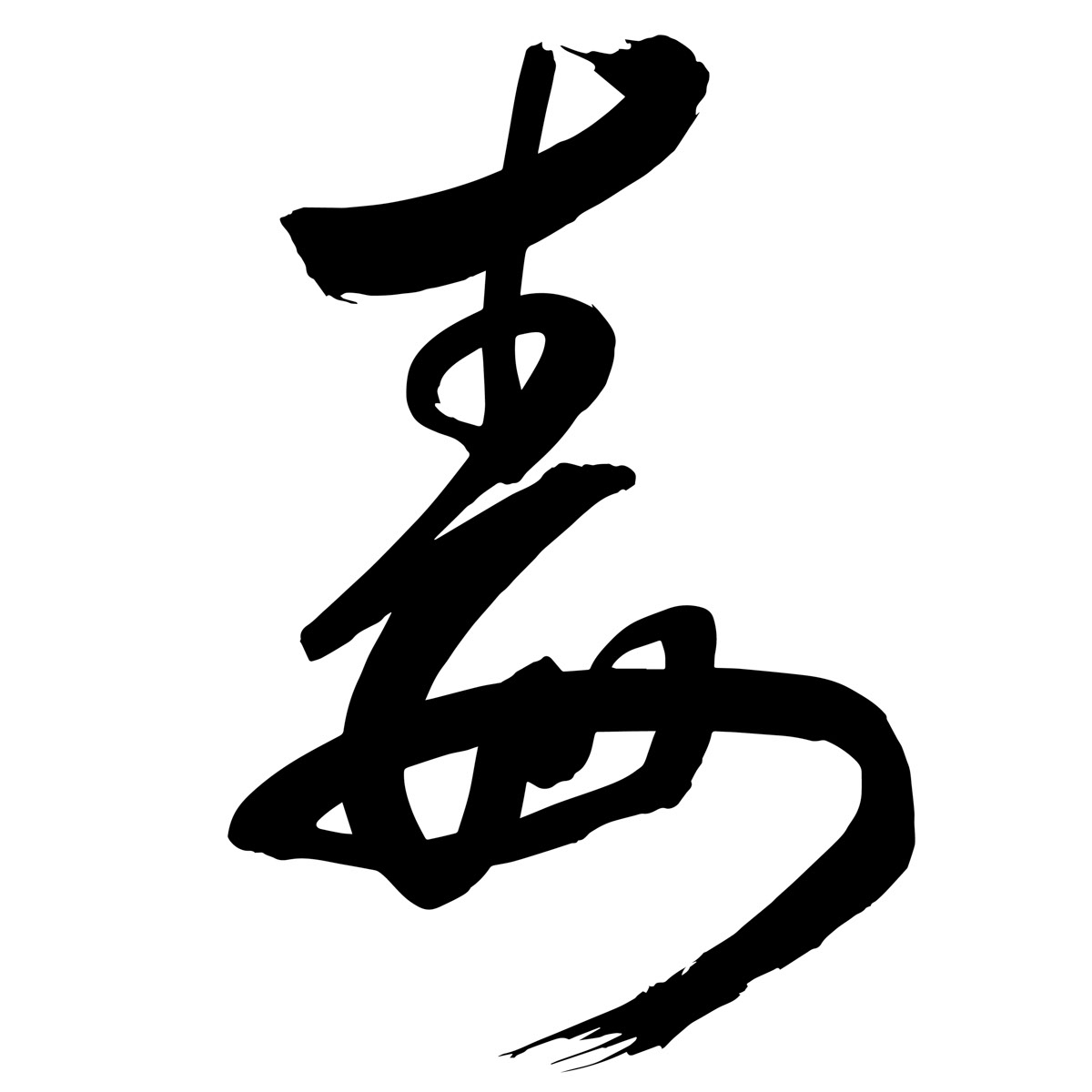
How to understand the saying "fight poison with poison"(以毒攻毒)
Wong: I've heard that eating scorpions can fight cancer, which is "fighting poison with poison". How can this be explained pharmacologically?
Feng: The whole scorpion is animal medicine. Traditional Chinese medicine believes it can calm the wind and convulsions, attack poison and disperse knots, and relieve pain. It can be used to treat stroke convulsions, rheumatism, hemiplegia, and can also be used for the treatment of malignant tumors.
Modern research has proven that 95% ethanol extract of whole scorpion, water extract, or whole scorpion protein pharmacodynamic components have anti-cancer activity against various in vitro cancer cell models (liver cancer, uterine cancer, prostate cancer, etc.), but these far cannot explain its anti-cancer effect.
Actually, the treatment of cancer with whole scorpions is still based on the traditional effects of attacking toxins and dispersing knots, and the clinical practice and historical literature related to tumors. The so-called "fight poison with poison" is mainly because the whole scorpion is a poisonous Chinese medicine. From the perspective of traditional Chinese medicine, cancer is a disease caused by toxic evil, so there is the saying "fight poison with poison"(以毒攻毒), and even "attack poison without poisoning"(攻有毒就不中毒). This kind of explanation is rather far-fetched and difficult to convince people. It is very dangerous and can easily lead to poisoning.
From the example of arsenic above, the arsenic content in the body of ALP leukemia patients is within the safe range after injection of arsenic until improvement. Therefore, "fighting poison with poison" is actually how to turn poison into medicine, and a series of research needs to be done to achieve safe medication.
Wong: Many people often say that Chinese medicine is a natural product, so it will not cause any harm to the body when people eat it. But I understand that many Chinese medicines are toxic. Can you explain it to us?
Feng: As the saying goes, "all medicines are poisonous"(是藥三分毒), both Chinese and Western medicines have adverse reactions. So if someone says "Chinese medicine cures diseases when sick, and nourishes when healthy"(中藥有病治病,無病養生), it seems wrong, but for experts, many Chinese medicines can turn poison into medicine, using different Chinese medicines to treat diseases and nourish health.
As explained above, Chinese medicine has divided Chinese medicine into three categories two thousand years ago:
- "Top-grade"(上品) Chinese medicines ——are non-toxic, and long-term use can maintain health and prolong life, such as ginseng, dendrobium, goji berries, licorice, rehmannia, and jujube, etc.
- "Medium-grade"(中品) Chinese medicines—— some are toxic and some are non-toxic. If you master the toxicity, dosage, course of treatment, and usage, and consider the condition, you can achieve the purpose of nourishing deficiency and treating diseases, such as lily, angelica, longan, deer antler, coptis, ephedra, angelica, scutellaria, etc.; and
- "Lower-grade" (下品)Chinese medicines—— are all highly toxic Chinese medicines. They should be used sparingly, not excessively, and not for a long time, such as rhubarb, aconite, gan sui, croton, arsenic, centipede, whole scorpion, etc.
Therefore, experienced Chinese medicine practitioners can classify products, combine ancient and modern theories and clinical and pharmacological toxicology, etc., to achieve "Chinese medicine cures diseases when sick, and nourishes when healthy". Ordinary people should follow the saying "all medicines are poisonous", and should not take Chinese medicine without authorization.
Easily confused Chinese medicine
Wong: What are the Chinese medicines for treating cancer ? What are other different drugs that can look very similar and can easily cause confusion?
Feng: Traditional Chinese medicine has always had "same medicine, different names" (同藥異名)and "same name, different substances"(同名異物).
"Same medicine, different names"(同藥異名) refers to the same kind of medicine, the same kind of medicinal material, with different names, such as Tianqi, Dianqi, Sanqi, Han Sanqi, Shanqi, Jinbuhuan, Xueshen, Tian Sanqi, Tianqi, Renshen Sanqi, etc(田七、滇七、參三七、漢三七、山漆、金不換、血參、田三七、田漆、人蔘三七).
"Same name, different substances" (同名異物)refers to the same medicine name, but different medicines, such as Mutong(木通). There are Mutong of Menispermaceae(木通科的木通), Chuan Mutong of Ranunculaceae(毛茛科的川木通) and Guan Mutong of Aristolochiaceae(兜鈴科的關木通)—- although all are called Mutong, but Guan Mutong of Aristolochiaceae has hepatorenal toxicity and carcinogenicity. Different from one medicine with multiple sources(一藥多源), such as the source of rhubarb(大黄), is the dried root and rhizome of Polygonaceae plant palm-leaf rhubarb(蓼科植物掌葉大黄), Tanggute rhubarb(唐古特大黄) or medicinal rhubarb(藥用大黄), all can be the genuine product of rhubarb; and such as Huanglian(黃連), there are dried root and rhizome of Ranunculaceae plant Huanglian(毛茛科植物黄連), triangular leaf Huanglian (三角葉黄連)or Yunlian(雲連), although they are three varieties, but they are all genuine products of Huanglian.
The above has already caused a lot of confusion. Therefore, now the Chinese Pharmacopoeia or international organizations are promoting ‘one medicine one name’.
Some plants are similar in appearance but different in substance, in Hong Kong there are cases of confusion and poisoning due to similar appearance, such as:
- Ghost mushroom(鬼臼) is a highly toxic medicine, because it is similar to Herba Epimedii (威靈仙)and Gentiana scabra(龍膽草), it has caused poisoning and death incidents; and
- Morning glory (淩霄花)is a non-toxic Chinese medicine, which is similar to the highly toxic Datura flower(洋金花), causing poisoning incidents.
So even professionals need to be careful to avoid mistakes.
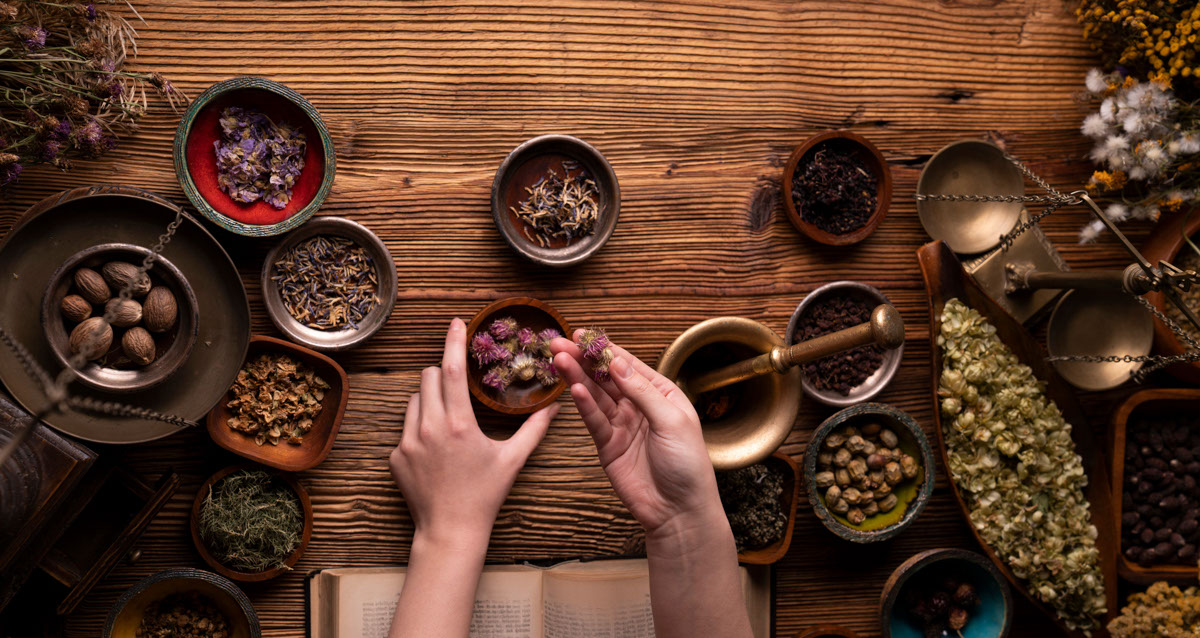
Part Three - The Use of Health Products
Wong: I have heard that taking certain types of Chinese medicine (such as Yunzhi) (雲芝) affect a person's immune ability, thereby preventing cancer and even treating cancer.
But affecting immune ability can be bidirectional - that is, it can be in a good direction, or it can be in a bad direction. For example, increasing cell growth/recovery speed, will it also promote the growth of cancer cells?
Feng: This question is very representative, many Chinese medicines and Chinese medicine compounds have been studied in modern research. Some people use some of the research results to explain the efficacy of Chinese medicine, which often brings some misunderstanding. If you want to use modern research to explain important effects and applications, you need to follow the requirements of modern health products and medicines.
For example, for Yunzhi(雲芝), if you want to conduct serious research, then you need to consider the following different aspects:
. In the research is the target a single component of Yunzhi, or its various components, or all its compound?
・Is it immunoenhancing or immunosuppressive in pharmacological action?
・Is the research model cells, animals, or humans?
・Is it for cancer prevention or cancer treatment?
・Is it for the prevention of certain/what kind of cancer or the treatment of certain/what kind of cancer? Including the final question of whether increasing cell growth/recovery speed will also promote the growth of cancer cells?
This can only be explained through research, or it requires comprehensive information, coupled with rich research and clinical experience, to explain clearly. It is easy to understand that the results of in vitro and in vivo studies are different. Even if the results of in vitro and in vivo studies are consistent, it is not possible to use the results of in vitro and in vivo studies to imagine the effect in the human body, such as whether tonic medicine is anticancer or carcinogenic.
Wong: Can you explain in more detail about "Ganoderma"(靈芝) and "Yunzhi" “cloud mushroom”(雲芝)that cancer patients often want to eat? Because a lot of people really want to know. What are these actually? Do they really have anticancer and cancer treatment effects?
Feng: Indeed, there are many "Ganoderma" and "Cloud Mushroom" health products on the market now, and many cancer patients or healthy people are eating them.
In fact, regardless of the definitions of health products or functional foods in the United States, Japan, or China, no health product or functional food can claim to have the effect of treating diseases, including the effect of treating cancer and anticancer.
"Ganoderma" and "Cloud Mushroom" are Chinese medicines of fungi, chemically containing polysaccharides or triterpenoids, which have a certain effect on immune function, and have a certain inhibitory effect on some cancer cells in vitro and in vivo, but none have been confirmed in humans to have anticancer and cancer treatment effects.
Whether it is "Ganoderma" , "Cloud Mushroom", various Chinese medicinal materials, or their various products, it is better to take them after consulting with a doctor or Chinese medicine practitioner.
Wong: Looking at it more broadly, there are many health products on the market that imply that eating them has an effect on preventing/treating cancer. How should we understand these products? Should we buy them casually and eat them?
Feng: As mentioned above, health products cannot claim to have the function of treating diseases (including treating cancer and anti-cancer), but in many countries, health products or functional foods are classified as food, that is, non-prescription drugs. Patients or ordinary people can buy them for consumption, but these should not be consumed in large quantities and for a long time. Even if it is a ‘biased’ diet, it will bring hidden health risks. Even for vitamins, there is no need to supplement if there is no deficiency. A healthy life is most important, including maintaining a happy mood, appropriate exercise, balanced diet and adequate sleep.
Of course, Chinese medicines that can be used as health products or functional foods mostly belong to the category of top-grade Chinese medicines. Regardless of their efficacy, their safety level should be very high.
Wong: I am very grateful to you for sharing so much with us today.
Feng: You're welcome.
(January 2022)



